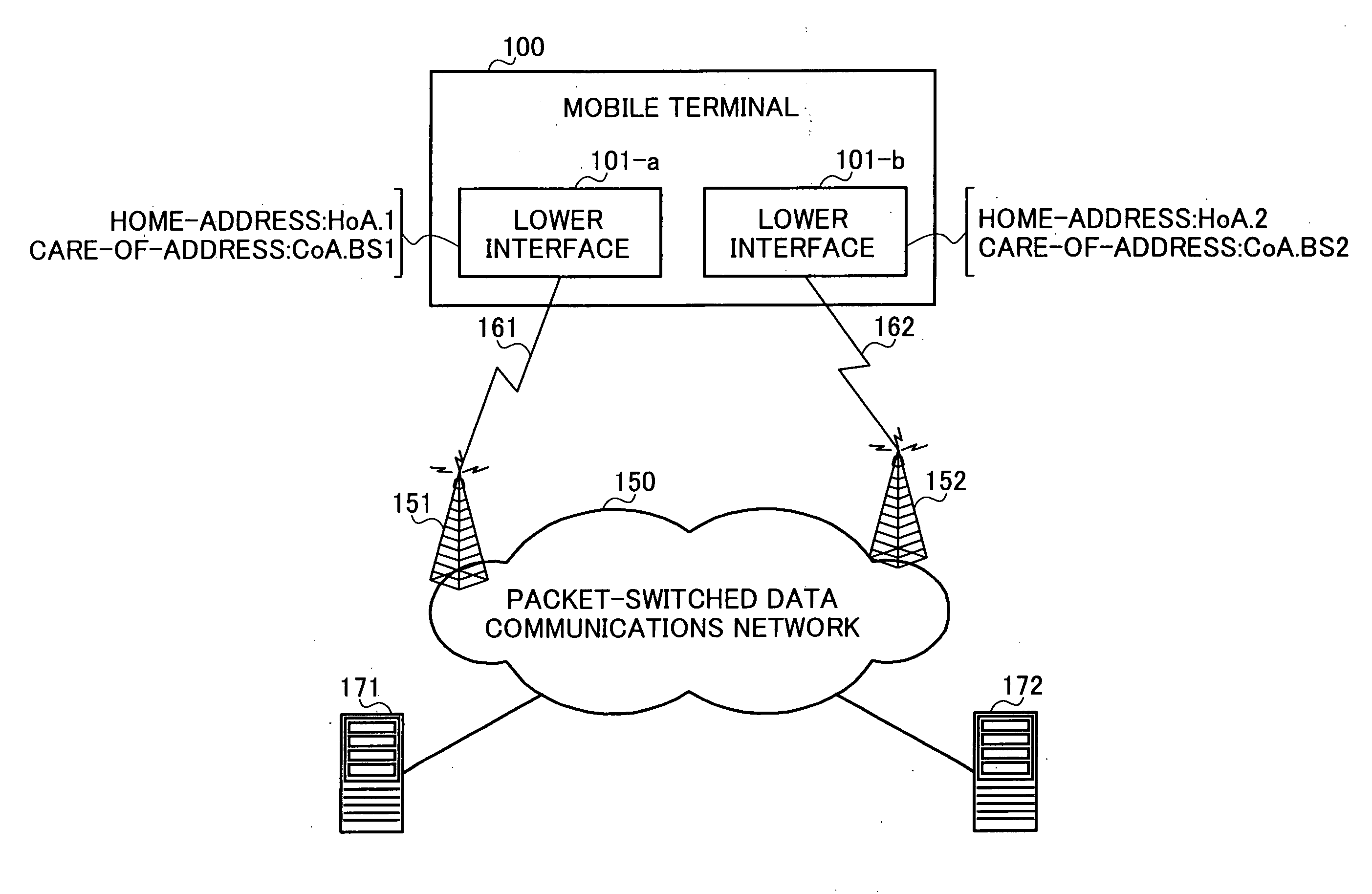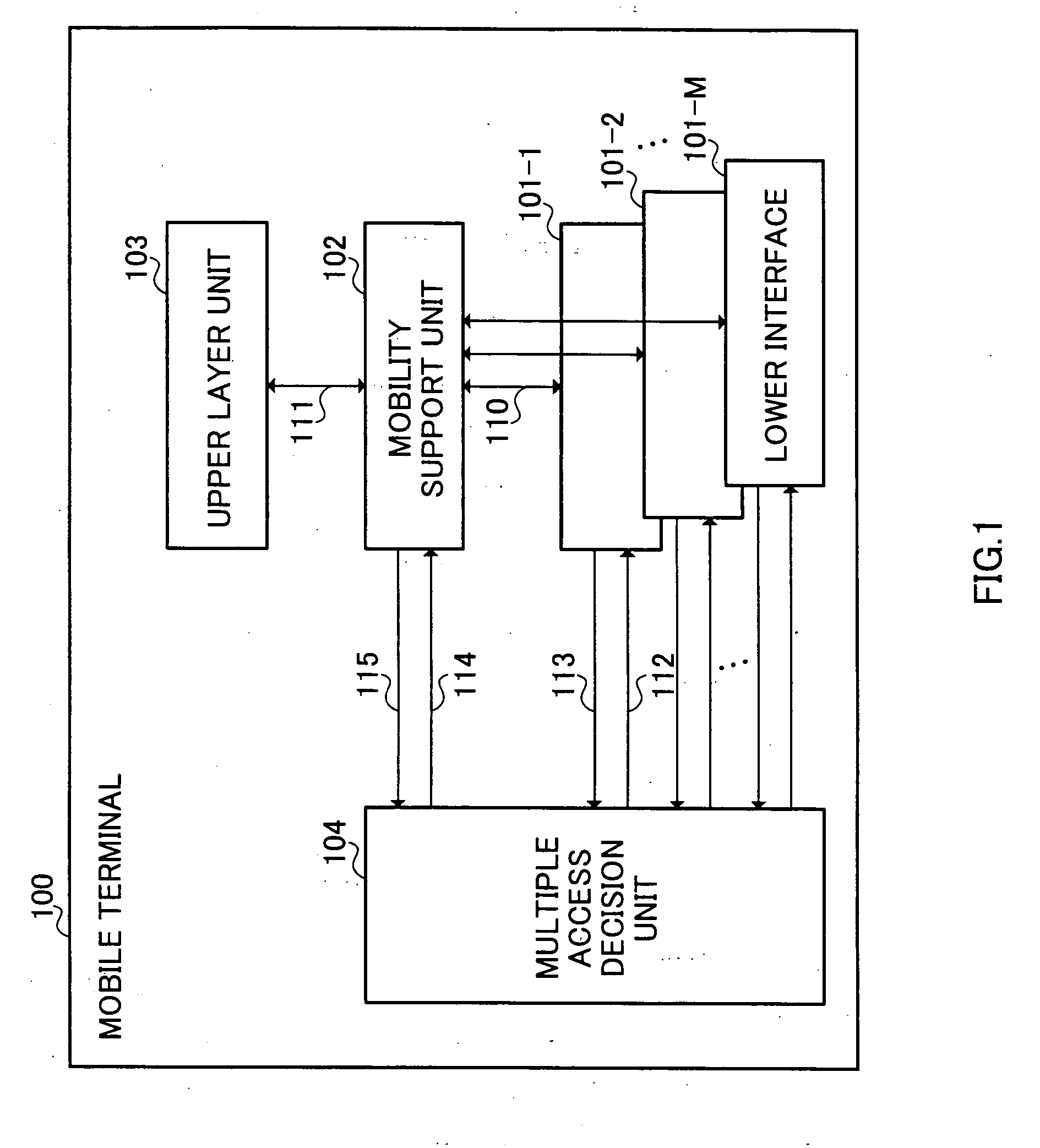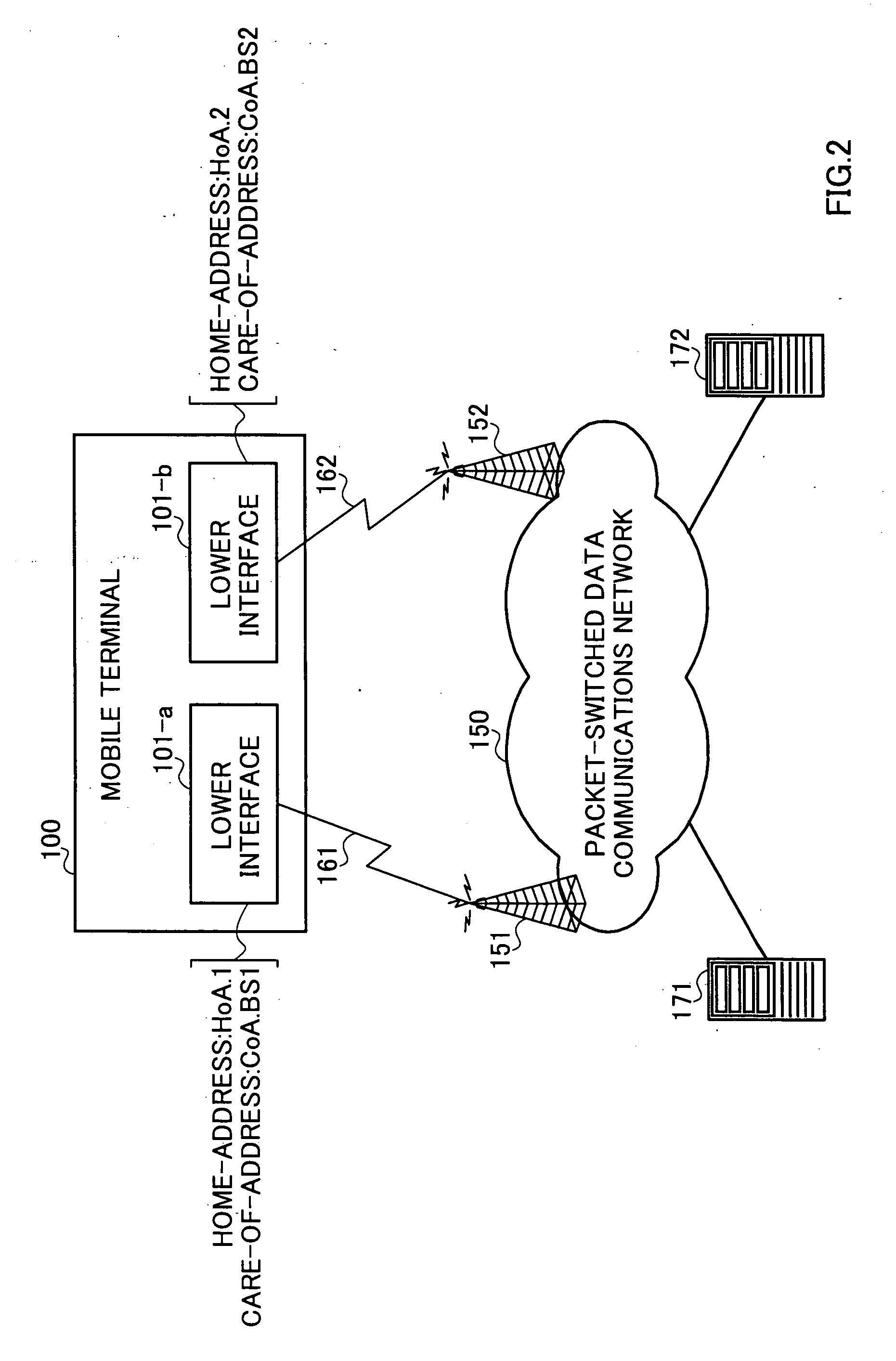Mobile terminal device and hand-off method thereof
a mobile terminal and hand-off technology, applied in multiplex communication, data switching networks, wireless commuication services, etc., can solve the problems of not being able to support such roaming capabilities, unable to deliver packets to mobile nodes, and adding to the processing load of base stations
- Summary
- Abstract
- Description
- Claims
- Application Information
AI Technical Summary
Benefits of technology
Problems solved by technology
Method used
Image
Examples
embodiment 1
[0032]FIG. 1 is a block diagram showing the architecture of a mobile terminal according to Embodiment 1 of the present invention. Mobile terminal 100 shown in FIG. 1 has M number (M is an integer greater than or equal to 2) of lower interfaces 101-1 to 101-M, mobility support unit (MSU) 102, upper layer unit 103, and multiple access decision unit (MADU) 104. When reference is made to any one or more of lower interfaces 101-1 to 101-M, the lower interface(s) will be hereinafter referred to as “lower interface 101.”
[0033] The different access mechanisms available in the mobile terminal are abstracted into lower interfaces 101-1 to 101-M. Lower interface 101 is a collective block to refer to: physical network interface hardware; software controlling the hardware; and protocols that govern the communications through such hardware. For example, under the International Organization for Standardization's (ISO) open systems interconnection (OSI) model, lower interface 101 will include all p...
embodiment 2
[0058]FIG. 4 is a block diagram showing the architecture of a mobile terminal according to Embodiment 2 of the present invention. Mobile terminal 200 shown in FIG. 4 has a basic architecture similar to that of the mobile terminal explained in Embodiment 1, and therefore the elements of mobile terminal 200 that are identical to those of mobile terminal 100 will be given identical reference numerals, and detailed description thereof will be omitted.
[0059] Mobile terminal 200 has M number of lower interfaces 201-1 to 201-M and MADU 202 instead of lower interfaces 101-1 to 101-M and MADU 104 of mobile terminal 100. Hereinafter, when reference is made to any one or more of lower interfaces 201-1 to 201-M, the lower interface(s) will be referred to as “lower interface 201.”
[0060] As a technical feature explained in the present embodiment, in mobile terminal 200, lower interface 201 uses prediction techniques to indicate to MADU 202 that it may go down in a short period of time. Therefore...
embodiment 3
[0083]FIG. 7 is a block diagram showing the architecture of a mobile terminal according to Embodiment 3 of the present invention. Mobile terminal 300 shown in FIG. 7 has a basic architecture similar to that of mobile terminal explained in Embodiment 1, and therefore the elements of mobile terminal 300 that are identical to those of mobile terminal 100 will be given identical reference numerals, and detailed description thereof will be omitted.
[0084] Mobile terminal 300 has M number of lower interfaces 301-1 to 301-M and MADU 302 instead of lower interfaces 101-1 to 101-M and MADU 104 of mobile terminal 100. Hereinafter, when reference is made to one or more of lower interfaces 301-1 to 301-M, the lower interface(s) will be referred to as “lower interface 301.”
[0085] The above-described embodiments disclosed methods whereby mobile terminals 100 and 200 can achieve seamless hand off with a plurality of active access links. In addition, in the present embodiment, it can be extended so...
PUM
 Login to View More
Login to View More Abstract
Description
Claims
Application Information
 Login to View More
Login to View More - R&D
- Intellectual Property
- Life Sciences
- Materials
- Tech Scout
- Unparalleled Data Quality
- Higher Quality Content
- 60% Fewer Hallucinations
Browse by: Latest US Patents, China's latest patents, Technical Efficacy Thesaurus, Application Domain, Technology Topic, Popular Technical Reports.
© 2025 PatSnap. All rights reserved.Legal|Privacy policy|Modern Slavery Act Transparency Statement|Sitemap|About US| Contact US: help@patsnap.com



